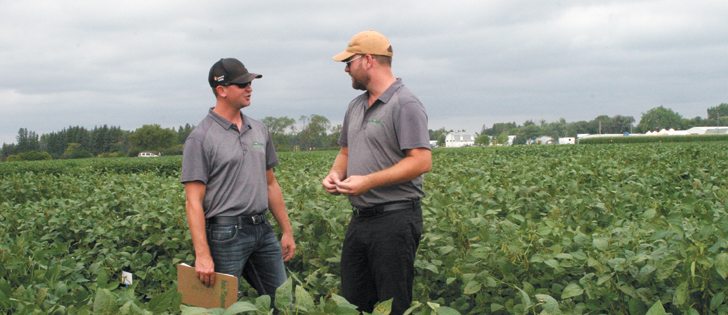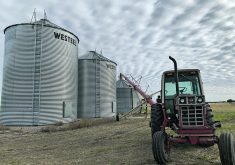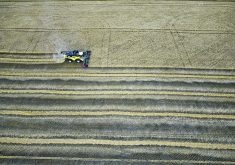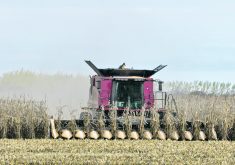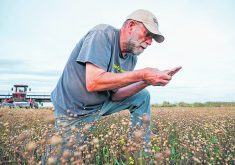MORDEN, Man. — There are unusual sights in Manitoba’s Red River valley today.
In some areas, the usually lush and thick crop stands are patchy with yellowed low spots, hints of spaces between rows, and just general thinness.
Yet other parts of the valley, the warmest and wettest part of the Prairies, have the voluminous crop stands typical of the region. But even with those crops, farmers express feelings of being anxious, worried that the combines will expose quality-damaging disease.
“In springtime, we were very dry and hoping for rain so that the crops would germinate, then it began raining and it hasn’t quit,” said Altona farmer Jason Voth as he checked the crops at the Agriculture Canada Morden Research Centre.
Read Also

Farming Smarter receives financial boost from Alberta government for potato research
Farming Smarter near Lethbridge got a boost to its research equipment, thanks to the Alberta government’s increase in funding for research associations.
“It has been trouble trying to find time to spray and windows to harvest. It works, but it’s just a battle.”
Excessive rain has dogged crops in the valley as it has across Western Canada this summer. Fortunately for farmers, soybeans do better than most crops with soaked soils, but the situation has stressed many crops.
“Our soybeans have been loving all this water,” said Toban Dyck, who farms just north of Winkler.
“They seem to have sopped it all up.”
However, he said his farm has been lucky because it didn’t get as much rain as some areas, like the Altona to Emerson band that Voth farms in.
Saturation affects crops in many ways. Root rots become common, weakening plants. Fungal and bacterial diseases become rife, with high humidity creating ideal conditions for many to develop.
Farmers had trouble in 2016 not just because of the amount of moisture, but because it didn’t come in massive downpours, but spread out every few days. That made it hard to spray fungicides and other crop protection products, with few dry days with low wind.
That left crops more unprotected than usual and the results show in the hoppers of the first combines of this year’s harvest.
“We started combining and there’s quite a bit of disease in the wheat, and a lot of empty heads and empty pods in the peas and empty canola pods,” said Voth.
“It won’t be a bumper crop.”
Most crops developed good roots because May weather was good for plant development.
But the end of May brought the rain, and since then every few days has seen a good dose.
Manitoba Agriculture pulse crop specialist Dennis Lange said farmers have struggled to manage the increased disease risk that the wetness and humidity have brought, never feeling that they could get on top of the risks.
“We needed a bit more time between the rains,” said Lange.




